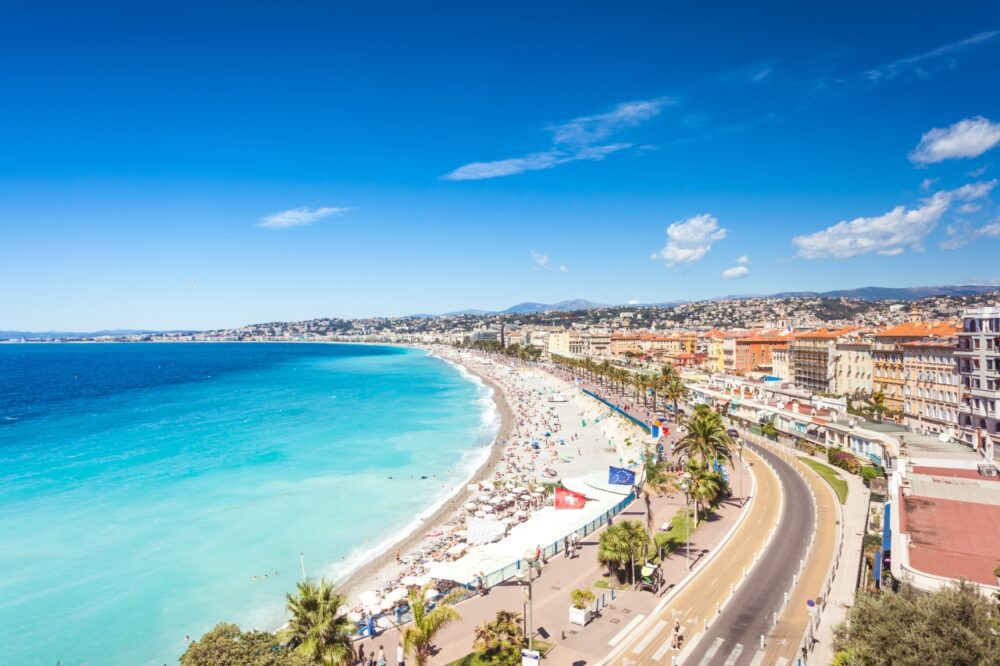
Is Nice worth visiting? Absolutely! When I first visited Nice, France, I was enchanted by its effortless blend of sophistication and Mediterranean charm. Strolling along the famous Promenade des Anglais, with the sparkling blue sea on one side and elegant Belle Époque architecture on the other, I felt like I had stepped into a postcard. The laid-back vibe, combined with the city’s undeniable glamour, makes Nice a destination that’s hard to resist.
Nestled on the French Riviera, Nice is a jewel of the Côte d’Azur. Known for its sun-soaked beaches, vibrant markets, and world-class art galleries, it’s a city that caters to both relaxation and culture. Whether you’re exploring the cobbled streets of the Old Town, savouring a fresh salade niçoise, or taking a short trip to the nearby villages of Èze and Saint-Paul-de-Vence, Nice offers an abundance of unforgettable experiences. But is Nice worth visiting for you?
In this blog post, we’ll dive into the top 10 reasons why Nice should be on your travel list, from its stunning coastal scenery to its cultural highlights. Plus, we’ll share travel tips to help you plan the perfect trip. Keep reading to discover why Nice is one of France’s most dazzling destinations.
Table of Contents
Pros – Reasons You Should Visit Nice
1. A Stunning Location on the French Riviera
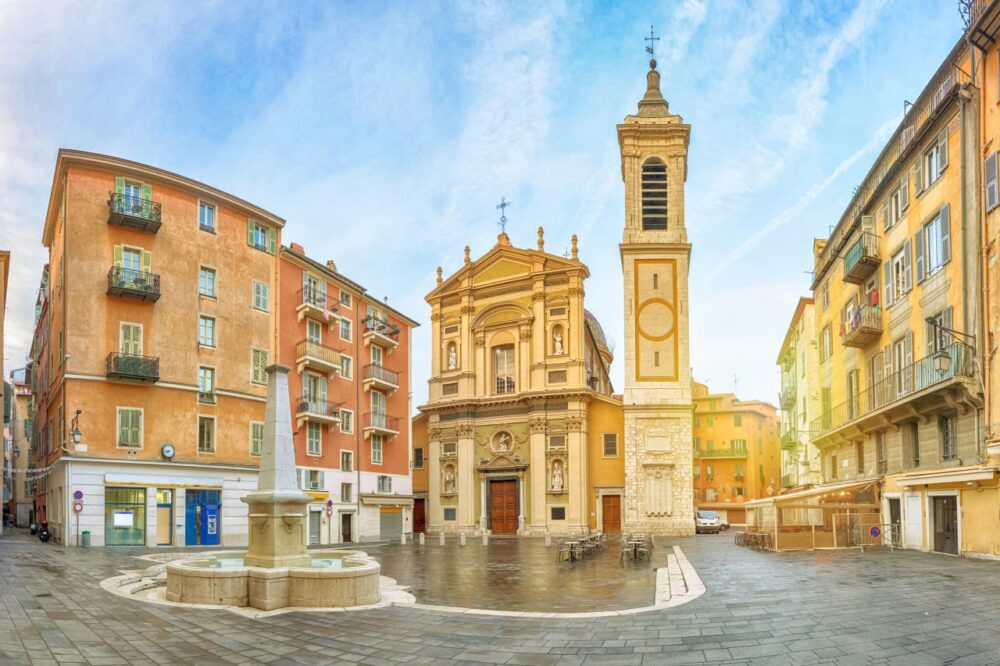
Nice is perfectly situated on the Côte d’Azur, offering breathtaking views of the Mediterranean Sea, a mild climate, and easy access to some of the most beautiful coastal scenery in Europe. The city is framed by the turquoise waters of the Baie des Anges on one side and rolling hills on the other, making it a paradise for travelers who love the combination of urban charm and natural beauty.
I arrived in Nice and was immediately struck by how picturesque it was. Whether walking along the Promenade des Anglais or admiring the view from Castle Hill, the city’s setting is simply stunning. The mix of sea, mountains, and elegant architecture creates a postcard-perfect atmosphere that makes every moment feel special.
2. A Beautiful Waterfront and the Famous Promenade des Anglais
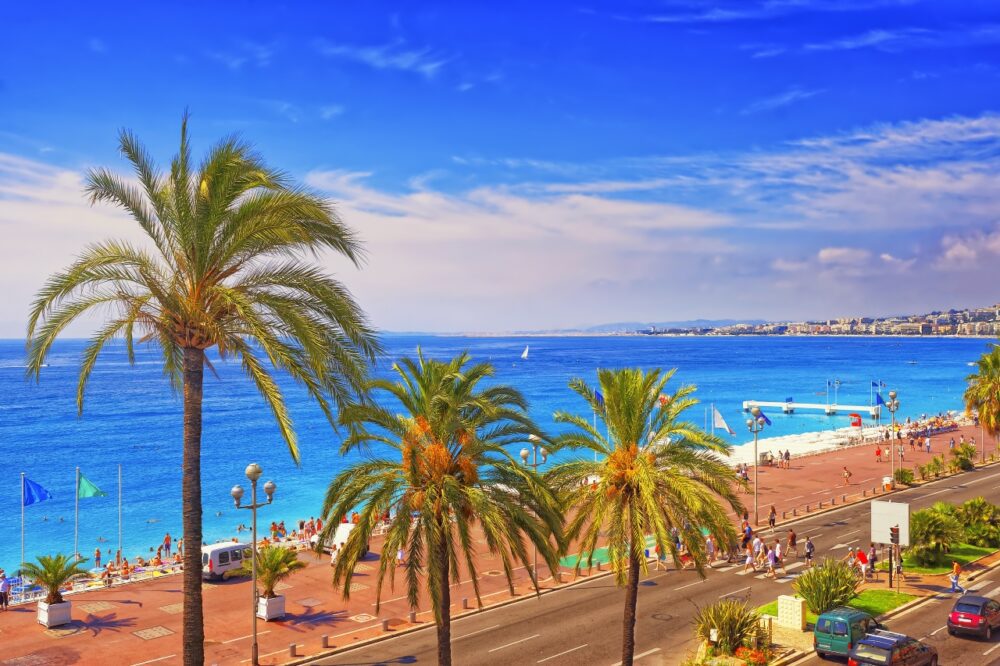
One of Nice’s most iconic features is the Promenade des Anglais, a long, scenic walkway that stretches for about seven kilometers along the Mediterranean coast. Lined with palm trees, stylish cafés, and luxury hotels, it’s the perfect place for a leisurely stroll, a morning jog, or simply relaxing while watching the waves.
I spent an afternoon walking along the promenade, stopping for a coffee at one of the seafront cafés. The blue waters, the fresh sea breeze, and the relaxed atmosphere made it easy to understand why so many artists and writers have fallen in love with Nice. Whether you’re people-watching, cycling, or just enjoying the view, the Promenade des Anglais is one of the city’s best spots.
3. The Vibrant and Colourful Old Town (Vieux Nice)
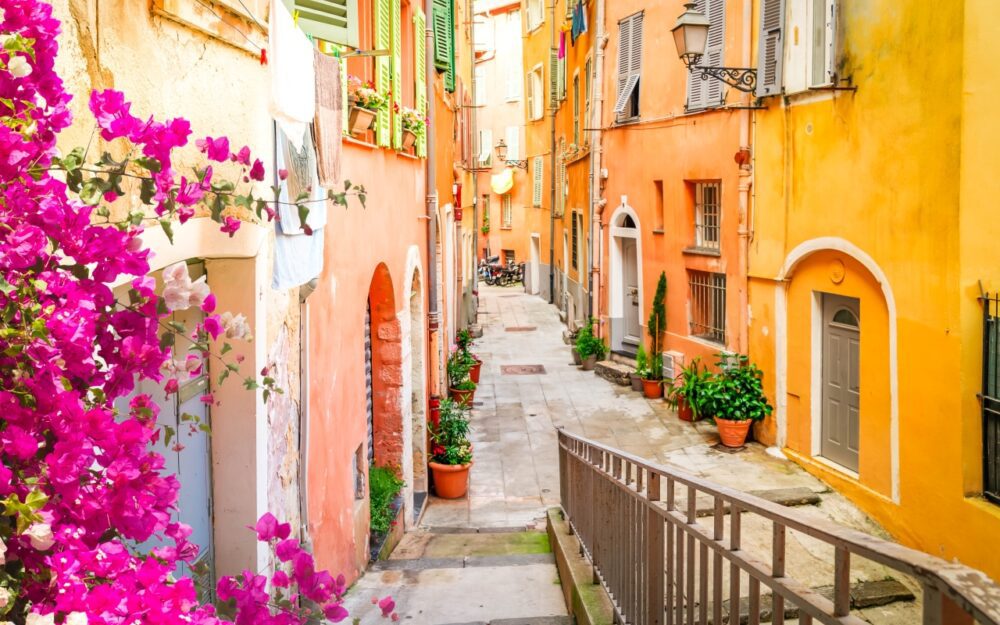
Nice’s Old Town is a lively maze of narrow, winding streets filled with pastel-colored buildings, charming cafés, and bustling markets. This area has a distinct Italian influence, a reminder of Nice’s history before becoming part of France in 1860. The Old Town is home to some of the best restaurants, bars, and shops in the city, making it the perfect place to explore both day and night.
I loved getting lost in Vieux Nice, discovering hidden squares and little artisan shops selling everything from handmade soaps to local spices. One of my favorite stops was the Cours Saleya market, where fresh flowers, cheeses, and Provençal specialties filled the air with delicious scents. The Old Town’s lively yet intimate atmosphere makes it a must-visit part of Nice.
4. A Food Lover’s Paradise with Amazing Niçoise Cuisine
Nice has a fantastic culinary scene that blends French and Mediterranean influences, offering everything from fine dining to casual street food. The city is famous for its local dishes, including salade niçoise, socca (a delicious chickpea pancake), and ratatouille. Fresh seafood is also a highlight, with many restaurants serving fish straight from the Mediterranean.
I tried socca at a small stall in the Old Town, and it was incredible—crispy on the outside, soft on the inside, and perfectly seasoned. Later, I had a classic salade niçoise at a seaside restaurant, and the combination of fresh vegetables, tuna, and anchovies was a perfect match for the warm, sunny weather. Whether you’re looking for Michelin-starred restaurants or local street food, Nice has something for every taste.
5. Spectacular Views from Castle Hill
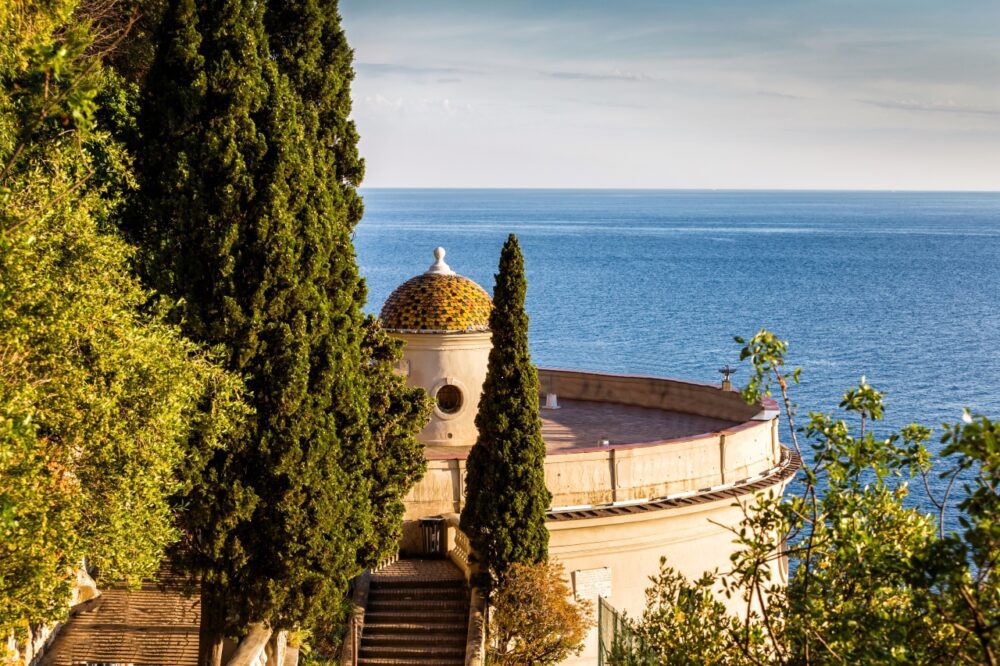
For the best panoramic view of Nice, a visit to Castle Hill is essential. This hilltop park offers breathtaking views of the city, the coastline, and the surrounding hills. Although the original castle no longer stands, the area has been transformed into a beautiful green space with waterfalls, walking trails, and historic ruins.
I took the staircase up to Castle Hill just before sunset, and the view over the Old Town and the bay was absolutely stunning. The changing colors of the sky reflecting on the sea made for one of the most memorable moments of my trip. There’s also a free elevator for those who don’t want to make the climb, but either way, the view is worth the effort.
6. A Perfect Base for Exploring the French Riviera
Nice’s central location makes it an ideal base for exploring other famous destinations along the French Riviera. With excellent train and bus connections, it’s easy to take day trips to glamorous cities like Monaco, Cannes, or Antibes, as well as charming villages like Èze and Saint-Paul-de-Vence.
I took a quick train ride to Monaco and spent the day exploring its luxury casinos, stunning harbor, and the Prince’s Palace. Another day, I visited Èze, a medieval hilltop village with breathtaking views of the Mediterranean. Having Nice as a home base made it incredibly convenient to explore the entire Côte d’Azur without constantly changing accommodations.
7. Fantastic Weather Almost Year-Round
Nice enjoys a Mediterranean climate with mild winters and hot, sunny summers, making it a great destination at any time of the year. The city gets around 300 days of sunshine annually, so visitors can expect pleasant weather for most of their trip. Even in the winter months, temperatures rarely drop below 10°C, making it one of the best warm-weather getaways in Europe.
I visited in September, and the weather was perfect—not too hot, but still warm enough for swimming in the sea. Even in December, you can sit outside at cafés without needing a heavy coat. If you want to escape cold, grey winters elsewhere in Europe, Nice offers a sunny and pleasant alternative.
8. A Rich Artistic and Cultural Heritage
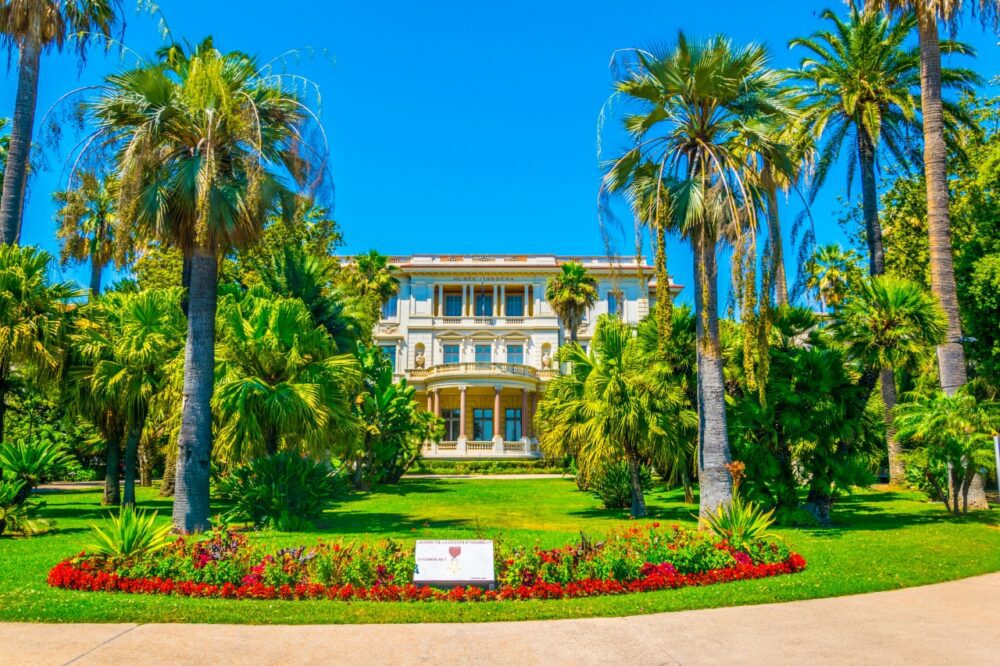
Nice has long been a favorite destination for artists, writers, and musicians, and its artistic legacy can be seen in its excellent museums and galleries. The Marc Chagall National Museum and the Matisse Museum both showcase stunning works from these legendary painters, while the Museum of Modern and Contemporary Art offers a great collection of 20th-century and contemporary art.
I spent a morning at the Matisse Museum, which is set in a beautiful villa surrounded by gardens. Seeing Matisse’s bright, expressive paintings in the place where he lived and worked added a special depth to the experience. Whether you’re an art lover or just curious about the city’s creative history, Nice’s museums are well worth a visit.
9. A Relaxed and Laid-Back Atmosphere
Unlike Paris or other big French cities, Nice has a more relaxed pace of life. People take their time enjoying meals, sipping coffee at outdoor terraces, and strolling along the waterfront. The combination of a warm climate, stunning scenery, and friendly locals creates a laid-back vibe that makes Nice a perfect place to unwind.
I found myself naturally slowing down in Nice—starting my mornings with a leisurely coffee, taking unplanned detours through quiet streets, and spending afternoons just watching the sea. It’s the kind of place where you can enjoy the simple pleasures of life without feeling rushed.
10. A City That Feels Both French and Italian
Nice has a unique cultural identity that blends French and Italian influences. Before becoming part of France in the 19th century, the city belonged to the Kingdom of Sardinia, and you can still see traces of its Italian heritage in the architecture, food, and even the local dialect.
I noticed the Italian influence everywhere—from the colorful buildings that reminded me of Liguria to the lively, market-style food culture in the Old Town. Even the way people greeted each other felt slightly different from other parts of France. This fusion of cultures gives Nice a special charm that sets it apart from other French cities.
Cons – Things You Should Consider When Visiting Nice
1. The Beaches Are Mostly Pebbly, Not Sandy
While Nice’s coastline is stunning, the beaches themselves are not the soft, sandy stretches that many visitors expect from a Mediterranean destination. Instead, they are covered in smooth, rounded pebbles, which can be uncomfortable for sunbathing and difficult to walk on without proper footwear. While some private beach clubs provide sun loungers and umbrellas, public beachgoers might find it tricky to get comfortable on the hard stones.
I didn’t realize how challenging the pebbles could be until I tried to walk barefoot along the shore—within seconds, I was wishing I had brought water shoes. Lying down on the pebbles was also less relaxing than on a sandy beach, and I ended up renting a sunbed to make things more comfortable. If you prefer soft sand, you might want to take a short trip to nearby Villefranche-sur-Mer or Antibes, which have more traditional sandy beaches.
2. Prices Can Be High, Especially in Peak Season
Nice is one of the most glamorous cities on the French Riviera, and with that prestige comes high prices, especially during the summer months. Hotels, restaurants, and even simple things like drinks on the Promenade des Anglais can be noticeably expensive compared to other French cities. While there are budget-friendly options, visitors should be prepared for inflated costs in the most touristy areas.
I was shocked when I ordered a simple glass of wine at a beachfront café and realized it cost almost double what I had paid in other parts of France. Finding affordable accommodation in July and August was also a challenge, as even basic hotels raised their prices significantly. If you’re visiting in high season, booking well in advance and seeking out local bistros instead of tourist-heavy restaurants can help keep costs down.
3. The City Gets Extremely Crowded in Summer
Nice is one of the most popular destinations on the Côte d’Azur, and in July and August, the influx of tourists can make the city feel overwhelming. The beaches, Old Town, and Promenade des Anglais become packed, making it harder to find a quiet spot to relax. Restaurants and cafés fill up quickly, and even simple activities like walking through the markets or finding a taxi can become frustrating.
I visited in mid-August, and while I loved the energy of the city, I sometimes found the crowds exhausting. The beach was so full that finding a free spot felt like a challenge, and trying to get a table at a popular restaurant without a reservation was nearly impossible. For a more relaxed experience, visiting in the shoulder seasons—May, June, or September—is a much better way to enjoy Nice without the peak-season chaos.
4. Traffic and Parking Can Be a Nightmare
Like many cities along the French Riviera, Nice has a traffic problem, particularly in the summer. The streets can become congested with cars, buses, and motorbikes, making driving a stressful experience. Parking is also notoriously difficult, with limited spaces and expensive parking garages. If you’re planning to rent a car to explore the region, be prepared for some frustrating moments.
I made the mistake of trying to drive through the city center on a Saturday afternoon, and it was a complete standstill. Finding parking near the Old Town was almost impossible, and I ended up parking in a garage that charged a small fortune for just a few hours. If you’re staying in Nice, relying on public transport, walking, or renting a bike is a much better way to get around.
5. Some Areas Can Feel Overly Touristy
While Nice has plenty of authentic charm, certain parts of the city—especially along the waterfront and in the Old Town—cater heavily to tourists. Some restaurants and shops are clearly designed for visitors rather than locals, offering overpriced food and souvenirs that lack real character. In peak season, it can sometimes feel like the city is more of a tourist destination than a place where locals live and work.
I noticed this particularly in the Old Town, where some restaurants had menus in five different languages and waiters calling out to passersby, something you rarely see in more local neighborhoods. While there are still plenty of authentic spots in Nice, you have to look beyond the obvious tourist areas to find them. Exploring residential districts like Libération or taking day trips to smaller Riviera towns can help you experience a more local side of the region.
When to Visit Nice
The best times to visit Nice are spring (April to June) and early autumn (September to October), when the Mediterranean weather is warm but not overwhelming, and the crowds are smaller than in peak summer. During these months, you’ll find ideal conditions for exploring the Promenade des Anglais, strolling through Old Town, and taking day trips along the Riviera. Summer (July and August) brings beach-perfect weather and festivals, though it can be busy and pricey. Winter in Nice is mild and quiet, making it a lovely escape, especially with the Nice Carnival in February adding a burst of colour and festivity to the city.
How to Get to Nice
Nice Côte d’Azur Airport (NCE) is located just 7 kilometres west of the city centre, making it one of the most accessible airports on the Riviera. It’s well-connected, with flights from Air France, Lufthansa, British Airways, and low-cost carriers like easyJet and Ryanair. From the airport, you can reach the city centre by tram line 2, which takes around 25 minutes and is affordable. Taxis and rideshares are also available, though they’re pricier. Nice is also connected by TGV trains to Paris, Marseille, and other major cities, with scenic coastal train routes from nearby destinations like Monaco, Cannes, and Italy.
Where to Stay in Nice
Nice has a range of neighbourhoods to suit all tastes and budgets, from beachside glamour to quiet residential charm:
- Luxury: Promenade des Anglais – This iconic waterfront area offers luxury hotels with stunning sea views. Top choices include Hotel Negresco, a grand Belle Époque hotel, and Hyatt Regency Nice Palais de la Méditerranée, both offering elegance right by the sea.
- Mid-range: Old Town (Vieux Nice) – With its colourful buildings, vibrant markets, and historic charm, Old Town is ideal for mid-range stays. Hotel La Perouse and Villa Rivoli provide comfort and character, just steps from the beach and the bustling Cours Saleya market.
- Budget: Gambetta – A bit away from the main tourist areas but still close to the beach, Gambetta offers budget-friendly options like Hotel Oasis and Hotel Boréal, perfect for travellers looking to stay near the action without the high cost.
Getting Around Nice
Nice is very walkable, especially in areas like Old Town and the Promenade des Anglais. For longer distances, the Lignes d’Azur tram and bus system is reliable and budget-friendly, with tickets valid across both trams and buses. Consider a day pass if you plan to explore multiple areas, as it’s more economical than single tickets. Nice also has a Vélo Bleu bike-sharing scheme, with docking stations around the city, perfect for a scenic ride along the Promenade or through the local parks. For day trips, SNCF trains are an efficient way to reach nearby Riviera towns like Cannes, Antibes, and Monaco.
How Long to Spend in Nice
Three to four days in Nice allows time to enjoy the city’s highlights, including the Promenade des Anglais, Castle Hill, Old Town, and the famous markets. With this amount of time, you can also explore the local art museums, like the Matisse Museum and Musée Marc Chagall, and have leisurely meals along the waterfront. If you have a few extra days, consider taking day trips to nearby spots like Cannes, Antibes, and Eze Village for a fuller Riviera experience. A week in Nice gives you ample time to enjoy both the city and the surrounding coastal gems.
Conclusion
So, is Nice worth visiting? Absolutely! With its stunning Mediterranean views, charming Old Town, and vibrant cultural scene, Nice offers something for every traveller. Whether you’re soaking up the sun on its pebbled beaches, exploring its art museums, or indulging in Provençal cuisine, Nice is a city that embodies the best of the French Riviera. While it can get crowded and pricey in peak season, the beauty and charm of Nice more than justify the visit. If you’re ready to experience the magic of the Côte d’Azur, start planning your trip to Nice today!
